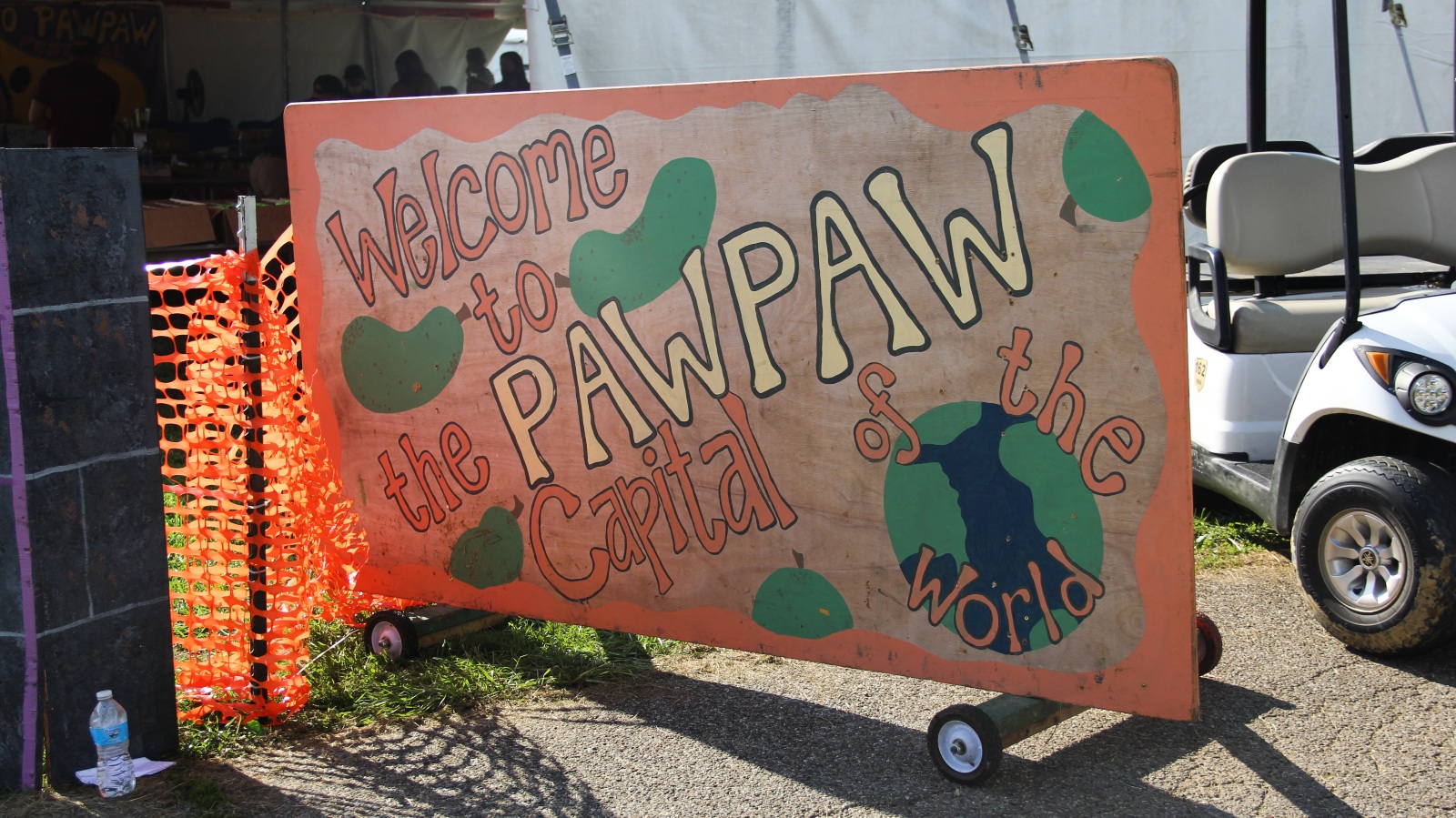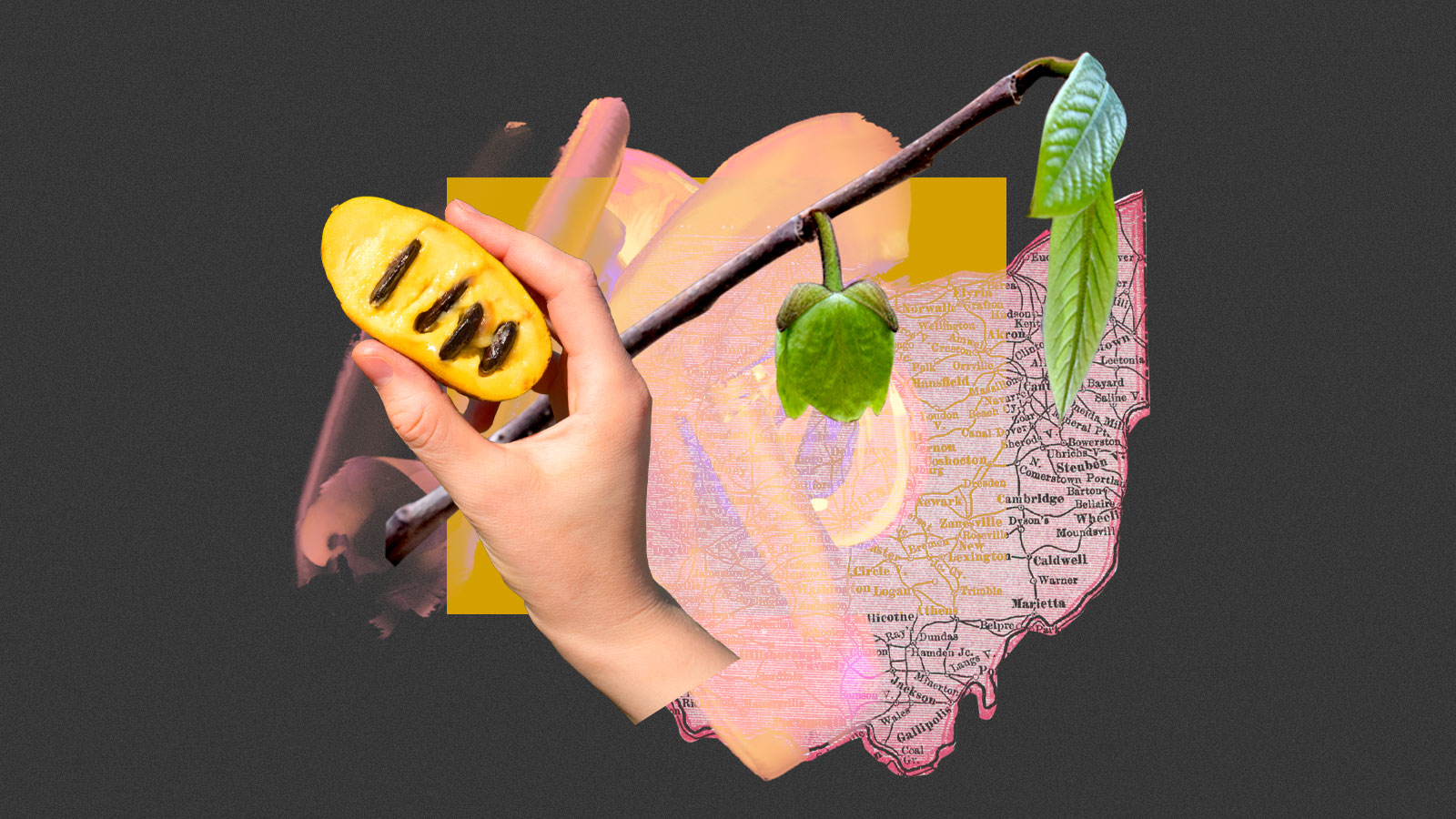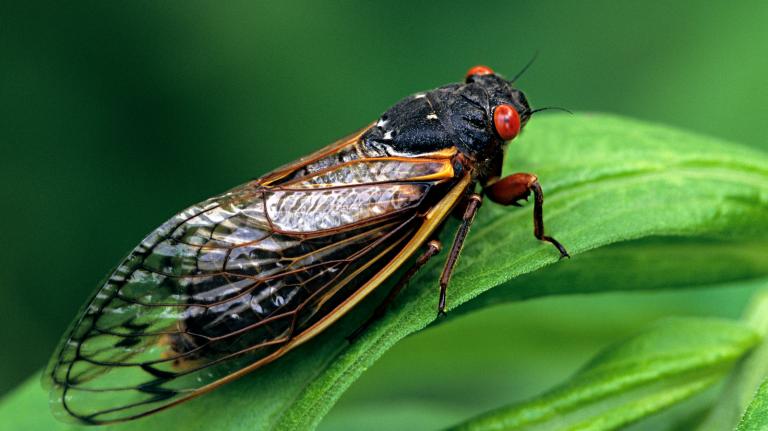Every September for the last 25 years, thousands of people have descended on a field in southeast Ohio to celebrate North America’s largest edible native tree fruit: the pawpaw. With custard-yellow flesh that tastes like a cross between a mango and a banana, pawpaws are eaten raw, worked into sauces and chutneys, or brewed into beer at the Ohio Pawpaw Festival, a celebration of both the fruit’s flavor and its history in Appalachia.
This year, more people than ever before came to learn about the plant, crowding around a cooking demonstration to watch local chefs craft a pawpaw salsa and even buying seedlings to plant in their backyards. A few dozen gathered under a white tent to hear Brian Koscho, an Ohio-based artist and creator of an Appalachian history podcast, talk about the Indigenous roots of the plant. Pawpaws, he said, have an “impact both here in this area, but also far, far beyond.”
When the COVID-19 pandemic jammed up agricultural supply chains, interest in local foods skyrocketed and the pawpaw quickly emerged as a tasty symbol of a more resilient food system. Known in some circles as the “hipster banana,” the green, fist-sized fruit made its way to rooftop gardens in Brooklyn, cocktail lists in bars and national magazines, and amateur fruit growers in California, well outside its native range. The industry expanded from foragers and a handful of independent producers selling their fruit at farmers markets to a growing number of small farms in states from West Virginia to Massachusetts.

But just as this fruit finds its place in the growing local-foods movement, it is being threatened by a changing climate and more extreme weather patterns. Plant biologists at the University of Georgia recently found that while rising global temperatures will open up new suitable areas for pawpaws to grow, these changes will likely take place too quickly for the wild plants to adapt.
“It’s not just more warming — it’s more temperature extremes too,” said Sheri Crabtree, a pawpaw researcher at Kentucky State University, reflecting on the various challenges to the plant’s future. Pawpaws are flowering about two weeks earlier in the spring than they did several decades ago, but temperature fluctuations can lead to hard freezes after they flower, causing crop loss.
Pawpaws currently grow across more than two dozen states, stretching from the eastern U.S. to parts of Nebraska, Kansas, and Texas. But their heartland is Appalachia, where they’ve been mentioned in songs and incorporated into regional recipes for generations; at least six states have named towns after the fruit. Before British colonization, Indigenous people in this region harvested pawpaw fruits and used the tree’s bark for building materials; tribes such as the Shawnee that were forced to move westward during the nineteenth century as Americans sought to settle on their lands have since planted pawpaws on reservations in Oklahoma, maintaining a connection to ancestral foodways.
Plants have a wide range of strategies for adapting to climate change, from developing drought resistance to migrating to new areas, thanks to pollinators and animals that disperse their seeds. But these adaptations take time — and establishing new populations is especially difficult for the pawpaw, whose pollinators, like flies, beetles, opossums, foxes, and raccoons, don’t typically travel long distances.
The University of Georgia researchers also found that because of low genetic diversity, it’s not clear whether the pawpaws that do manage to establish themselves elsewhere will have the same kind and quality of edible fruits as the ones we know today. A 2015 report from the U.S. Forest Service came to a similar conclusion.
Pawpaws need a period of cold for their seeds to germinate in the spring; toward the southern end of their range, they likely won’t get that as temperatures rise. In most places, though, growers expect the plants to thaw, blossom, and ripen earlier in the year, requiring them to plan out their harvest times accordingly. Ron Powell, the former president of the North American Pawpaw Growers’ Association, or NAPGA, said he’s already noticed changes: His grove of about 500 trees are ripening weeks earlier than usual some years. And a drought that hit his area of southwestern Ohio in late July reduced his crop to about a third of its normal size.

Foragers, who still make up a sizable chunk of harvesters, might be particularly vulnerable as shifting weather patterns affect where pawpaws are found in the wild, said Chris Chmiel, the founder of the Ohio Pawpaw Festival and a grower of the fruit. The plants prefer low elevations and the nutrient-rich, moist soils along creeks or rivers, a habitat that’s already been diminished by urbanization and large-scale agriculture in much of the Midwest and Appalachia. And climate change is expected to bring both more extreme droughts and heavy rains to the region — neither of which is good for pawpaws, Chmiel said.
Harvests can of course vary from year to year, Chmiel said, but he’s also noticed changes recently, with a third of his trees dying. He says he’s not sure why it’s happened, but noted that heavy rains could have been a factor. He’s working with scientists at Ohio State University to figure it out.
“We’ve had a lot of rain events [where] instead of getting two inches, we’re getting four or six inches,” Chmiel said. “And a couple of years ago, we had a spring where it rained nonstop for six weeks. And I look at that, and I think these pawpaw trees were really stressed out.”
Still, growers like Powell aren’t too worried, at least in the short term. The core of the pawpaws’ range in Appalachia will most likely remain suitable for the next century, while strategies like irrigation can help stave off the impact of more frequent droughts.
Researchers are also working on breeding new varieties of the plants that can better adapt to changing conditions, Crabtree said. Her lab at Kentucky State University is developing varieties that flower later, to avoid damage from late-spring frosts, and ripen earlier, to accommodate a shorter growing season in more northern climates. Both of these could help growers deal with the impacts of climate change on their crops.
“I think they’re going to survive,” Powell said. “They’ll probably adapt better than we will to climate change.”



